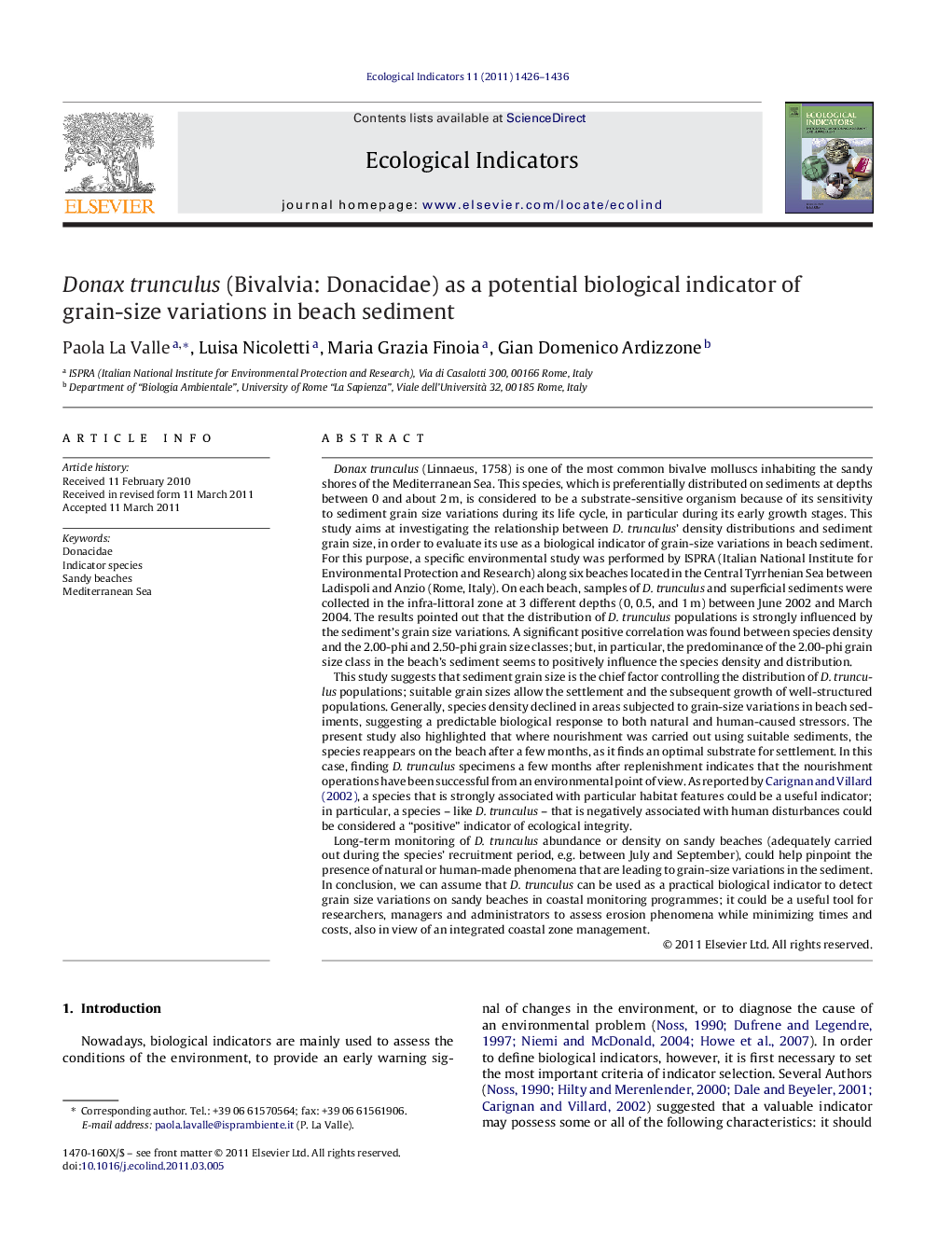| Article ID | Journal | Published Year | Pages | File Type |
|---|---|---|---|---|
| 4374080 | Ecological Indicators | 2011 | 11 Pages |
Abstract
Long-term monitoring of D. trunculus abundance or density on sandy beaches (adequately carried out during the species' recruitment period, e.g. between July and September), could help pinpoint the presence of natural or human-made phenomena that are leading to grain-size variations in the sediment. In conclusion, we can assume that D. trunculus can be used as a practical biological indicator to detect grain size variations on sandy beaches in coastal monitoring programmes; it could be a useful tool for researchers, managers and administrators to assess erosion phenomena while minimizing times and costs, also in view of an integrated coastal zone management.
Related Topics
Life Sciences
Agricultural and Biological Sciences
Ecology, Evolution, Behavior and Systematics
Authors
Paola La Valle, Luisa Nicoletti, Maria Grazia Finoia, Gian Domenico Ardizzone,
